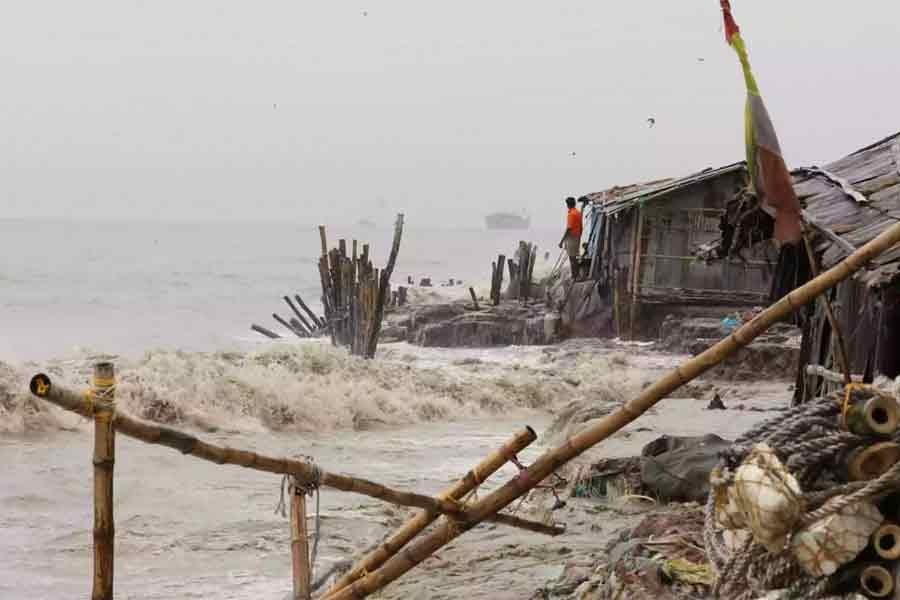Mercifully, Sitrang did not turn out to be a super cyclone, as the Met Office in Dhaka made its apprehension known, like Sidr or Aila. Although the deaths and damage are bound to prove overwhelming for those falling victim to it, yet it must be admitted that the trail of devastation is limited to smaller areas than were anticipated. What is particularly encouraging is that the nation has once again proved its capacity for disaster management in the face of cataclysmic natural calamities. Indeed, any country can feel proud of the evacuation of 1.0 million people from their homes to safe cyclone shelters on a short notice. The highest number of deaths, 14 out of 35, were from fall of trees or branches either on homes or on people directly; drowning accounted for the second highest number of deaths. The issue of planting foreign trees merely on commercial consideration therefore demands a serious review.
A clear picture of death and devastation is yet to emerge but unconfirmed reports put death so far at 35. But the immediate account of loss of life and damage caused to houses, crops and fish enclosures as presented by the state minister of the disaster management and relief at a press briefing on Tuesday confirms that the country has been spared a calamitous devastation. Yet at a time when people are reeling from market volatility of an unprecedented order, the collapse of and damage to 10,000 houses, standing crops on 6,000 hectares and flooding of 1,000 fish enclosures, as estimated initially, appear as a double whammy. The minister's announcement of donation of Tk 25,000 for families of each of the deaths, roofing tin for repair of houses and interest-free loan to owners of washed-off fish farms may be of immediate help but will prove too little for their recovery from the double-pronged affliction.
True, the lesson learnt by people in the coastal regions is still proving handy for survival in the face of storms and cyclones. But the way the co-existence between seas and land mass is getting increasingly upset with the unleashing of elemental furies so frequently on account of climate change, even the most resilient people there may find themselves wanting in resilience. Their vulnerability is made worse by the lack of seriousness on the part of those on whom lies the responsibility of ensuring that the protection dams against rising sea water withstood at least the onslaughts of cyclonic storms of moderate speed and strength.
The programme of afforestation in the coastal areas augurs well for inhabitants there. If the embankments or protection dams had extensive afforestation, their capacity to withhold cyclonic onslaughts would have been enhanced many times over. Then reforestation in the Sunderbans should also be taken as a priority task. The green friends will stand guards as the first and second lines of defence when storms or cyclones strike the coastal belt. In this connection, there should be a private-public collaboration for putting in place such an effective natural wall against wind-swept surging waves. Meanwhile, let the meteorological department get its acts together. It was particularly galling to see that it predicted landfall of Sitrang on Bangladesh coast late night or early morning but actually it struck in the evening. The time gap proves crucial because many can be caught off guard due to such wrong forecasts.


